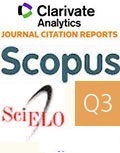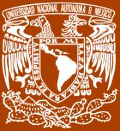Miocene Dipterocarpaceae leaf from Sumatra and amber geochemical analyses
Una hoja de Dipterocarpaceae del Mioceno de Sumatra y análisis geoquímicos en ámbar
George O. Poinar Jr.1, Virginia Friedman2, Joseph B. Lambert3, Adam Kingery3, Alejandro Bugarin4, Yuyang Wu5, Francisco J. Vega6,*
1 Oregon State University, Department of Integrative Biology, Corvallis, OR 97331, USA.
2 1000 Walnut Place, Mansfield, TX 76063, USA.
3 Trinity University, Department of Chemistry, San Antonio, TX 78212 USA.
4 Florida Gulf Coast University, Department of Chemistry and Physics, Fort Myers, FL 33965, USA.
5 Northwestern University, Department of Chemistry, 2145 Sheridan Road, Evanston, IL 60208, USA.
6 Universidad Nacional Autónoma de México, Instituto de Geología, Ciudad Universitaria, Mexico City 04510, México.
Corresponding author: (F.J. Vega) This email address is being protected from spambots. You need JavaScript enabled to view it.
How to cite this article:
Poinar Jr., G.O., Friedman, V., Lambert, J.B., Kingery, A., Bugarin, A., Wu, Y., Vega, F.J., 2025, Miocene Dipterocarpaceae leaf from Sumatra and amber geochemical analyses: Boletín de la Sociedad Geológica Mexicana, 77(1), A231124. http://dx.doi.org/10.18268/BSGM2025v77n1a231124
Manuscript received: September 7, 2024; Corrected manuscript received: November 17, 2024; Manuscript accepted: November 22, 2024
ABSTRACT
A large leaf was discovered on a piece of fossilized resin from Jambi Province, Sumatra. Based on its location, mid-Miocene age, and structural similarity to modern leaves of members of the family Dipterocarpaceae, it is tentatively assigned to the genus ?Dipterocarpus. This action is supported by the presence of Group B resinites as determined by the use of carbon-13 NMR Spectroscopy. The fossil leaf was surrounded by a hard sub-bituminous coal that had been subjected to high temperatures and pressures that destroyed most of the resinite. The presence of a light brown covering surrounding the fossil suggests that there was erosion of silicified sandstone. The leaf would fall within the Malesian floristic Region together with some 25,000 other species of flowering plants. The Dipterocarpaceae predominately inhabit tropical regions of the Old World. Conditions that occurred in Sumatra when the leaf was fossilized probably greatly resembled those in the state coal mine in Wonthaggi. These Australian lignitic coals still contain associated fossil resin in the form of plant material such as leaves; however, acids destroyed most animal remains. The Sumatran resin that contained the fossil leaf under study was likely subjected to intense volcanic activity, as revealed by XRD studies. Trace amounts of Tonstein minerals i.e. quartz, illite, and mica (muscovite) are related to volcanic ash falls. In fact, volcanic activity and its relationship to the increased production of resin during the Miocene may have continued since the middle of the twentieth century.

